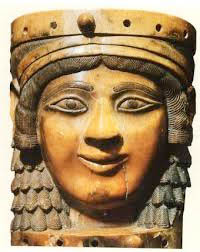 “How use doth breed a habit in a man!”
“How use doth breed a habit in a man!”
(Two Gentlemen from Verona, act 5, sc. 4)
Comment. Now that this year’s Easter is past, here is some related or, if you like, remarkably useless information.
To begin with, the strong though invisible chain of habit (as per this article’s quote) leads most of us to overlook things we take for granted – and the habit is further strengthened by the “inaudible and noiseless foot of time”.
For example, we all know what Easter is. And it is already an inconsequential complication that the festivity is called “Easter” in the Anglo-saxon languages and Pasqua (Italian, from the Latin Pascha), or Paque (French), Pascua (Spanish) in the Latin languages, etc.
Less commonly known is that the term ‘Pascha’ is the Latin version of a Hebrew word meaning the ‘passover’, where the Passover refers to the well known Exodus, made famous by the old Testament and Hollywood.
Even less commonly considered is the etymology and consequent historical developments of ‘Easter’. In the Pagan and ancient times of the Bible, there was indeed a festival called “Easter, or rather “Ishtar”. The festival commemorated the resurrection of one of the Pagan gods believed to be the only begotten son of the moon-goddess and the sun-god.
Also involved was a grandson of Noah (the Noah of the Ark), named Cush, who married Semiramis, queen of Babylon. Cush and Semiramis had a son called Nimrod (also found in the Bible (Genesis 10:8-10), where he is defined as a “mighty hunter before the Lord”).
But the dynamics of permanent war caused Nimrod to be killed and his body cut into pieces, mailed and delivered to various part of the kingdom (of Babylon). Semiramis, widowed queen turned coroner, re-assembled all the different parts except the genitals that were never found. The re-assembly being incomplete, Nimrod could not come back to life. Semiramis, concerned about public relations, made it known that Nimrod had ascended to the sun and was now to be called “Baal”, the sun-god.
By design or default Semiramis became then the actual founder of a mystery-religion and with the help of Satan she set herself up as a goddess. Semiramis claimed that she was immaculately conceived and that the moon was a goddess that went through a 28-day cycle. When full, the goddess-moon ovulated.
That is how Semiramis was born or rather, how she came down in a large moon-egg that fell into the Euphrates, during the first full moon after the spring equinox – a time landmark for the setting of the current Easter festivity date.
In the recurrent modification of words through the ages, Semiramis became known as “Ishtar”, or “Easter”, and her moon-egg became the “Ishtar’s” egg.”
In turn Ishtar became pregnant via the unusual agency of the rays coming from the sun-god Baal. The issue of this union was named Tammuz who, clearly not a vegetarian, became fond of rabbits. Tammuz being the son of the sun-god, his culinary preferences caused rabbits to become sacred.
Just as we are prone to do, people forgot with time that Ishtar was really the stage-name of Semiramis. Ishtar became the recognized goddess of fertility (eggs) and sex (fast breeding rabbits). Which – eggs and bunnies – after a few thousand years, have become inseparable companions, profit makers and advertising symbols for Walmart, the Consumer Society and Trickle-down Economics.
But there are always complications. The current Easter holiday falls on the first Sunday after the full moon following the Spring Equinox. After the Schism of 1054 AD the Christian world divided itself into Roman Catholics and Eastern Orthodox Christians. The former use the Gregorian calendar to calculate Easter, the latter the older Julian calendar. That is why Easter falls on different dates in the two religions.
In the play. Valentine learns to accept his exile in the forest. He had to run for his life after being banned from Milan by the Duke, misled by Valentine’s treacherous friend Proteus.
